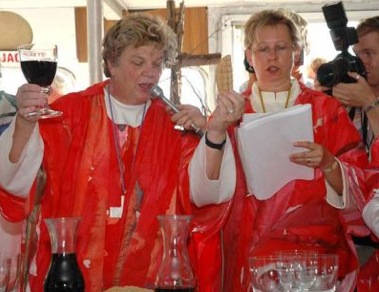Should visitors to GetReligion choose to search our archives for the term “Womenpriests” they will find eight pages of results, most of them dedicated to dissecting alleged news reports about this tiny splinter movement on the left side of the world of American Catholicism.
I say “alleged” because most of these stories resemble public relations essays, rather than news reports that take seriously the beliefs of people on both sides of this issue. In at least one case (“If Womenpriests were rabbis“) it appeared that the Baltimore Sun team actually cooperated with the organizers of a Womenpriests ordination rite to help protect local Catholics (some on the payroll of the real church) who attended the event. For a few other hot links to past coverage, including the work of GetReligionista emeritus M.Z. Hemingway, click here, here, here and here.
Now, Deacon Greg Kandra — scribe at the fine weblog “The Deacon’s Bench” — has taken his turn at pounding his head, as a veteran journalist, on this particular wall. For those not familiar with his work, Kandra is a former CBS Evening News writer with 26 years, two Emmys and two Peabody Awards to his credit. So when this Catholic clergyman chooses to dissect a report from a CBS affiliate, his commentary has a unique level of clout.
This is poor on so many levels. Reporter Maria Medina should be embarrassed. My only conclusion is that it’s sweeps month and the affiliate is desperate for ratings.
Offered as another in his occasional series called “Great moments in journalism,” Kandra called this post, “How NOT to report on women priests.” It helped that the CBS affiliate in Sacramento, Calif., published a transcript of its alleged news story on the movement officially known as “Roman Catholic Womenpriests.”
Let’s let the deacon walk readers through this primer on how not to do this job. Here’s a few choice samples:














